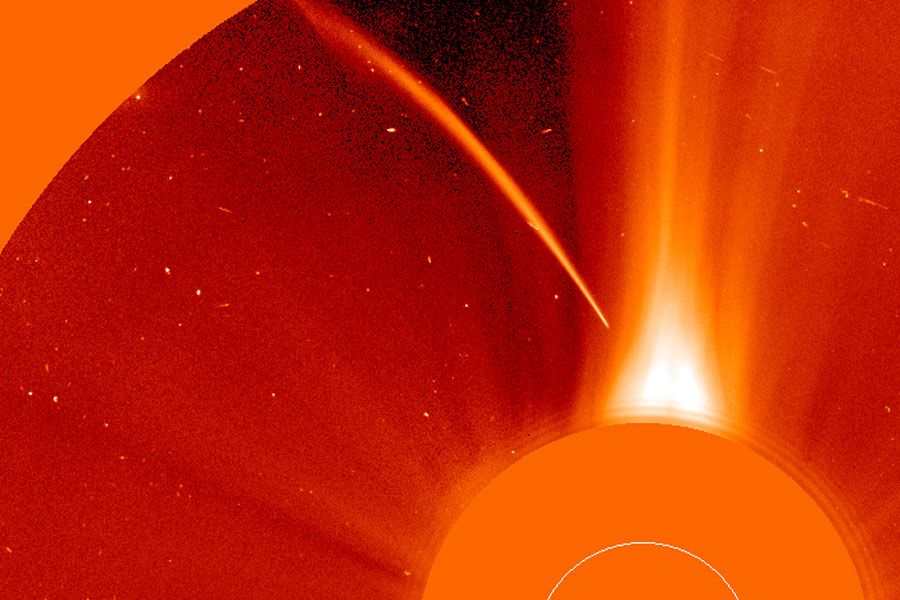Sungrazer
The Sun destroyed this comet.
Arcing toward a fiery fate,
this Sungrazer comet
was recorded by the SOHO spacecraft's
Large Angle
Spectrometric COronagraph(LASCO) on 1996 Dec. 23.
LASCO
uses an occulting disk, partially visible at the lower right,
to block out the otherwise overwhelming
solar disk allowing it to
image the inner 5 million miles of the relatively faint
corona.
The comet is seen as its
coma enters the bright equatorial
solar wind region
(oriented vertically). Spots and blemishes on the image
are background stars and camera streaks caused by charged particles.
Positioned in space to
continuously
observe the Sun, SOHO has now been used to
discover over 1,500 comets, including
numerous sungrazers.
Based on their orbits, they are
believed to belong to a
family of comets created by successive
break ups from a single large parent comet
which passed very near the Sun in the twelfth century.
The Great
Comet of 1965, Ikeya-Seki, was also a member of the
Sungrazer family, coming within about 650,000 kilometers of the
Sun's surface.
Passing so close to the Sun,
Sungrazers are subjected to destructive
tidal forces
along with intense solar heat.
This comet, known as
SOHO 6, did not survive.





